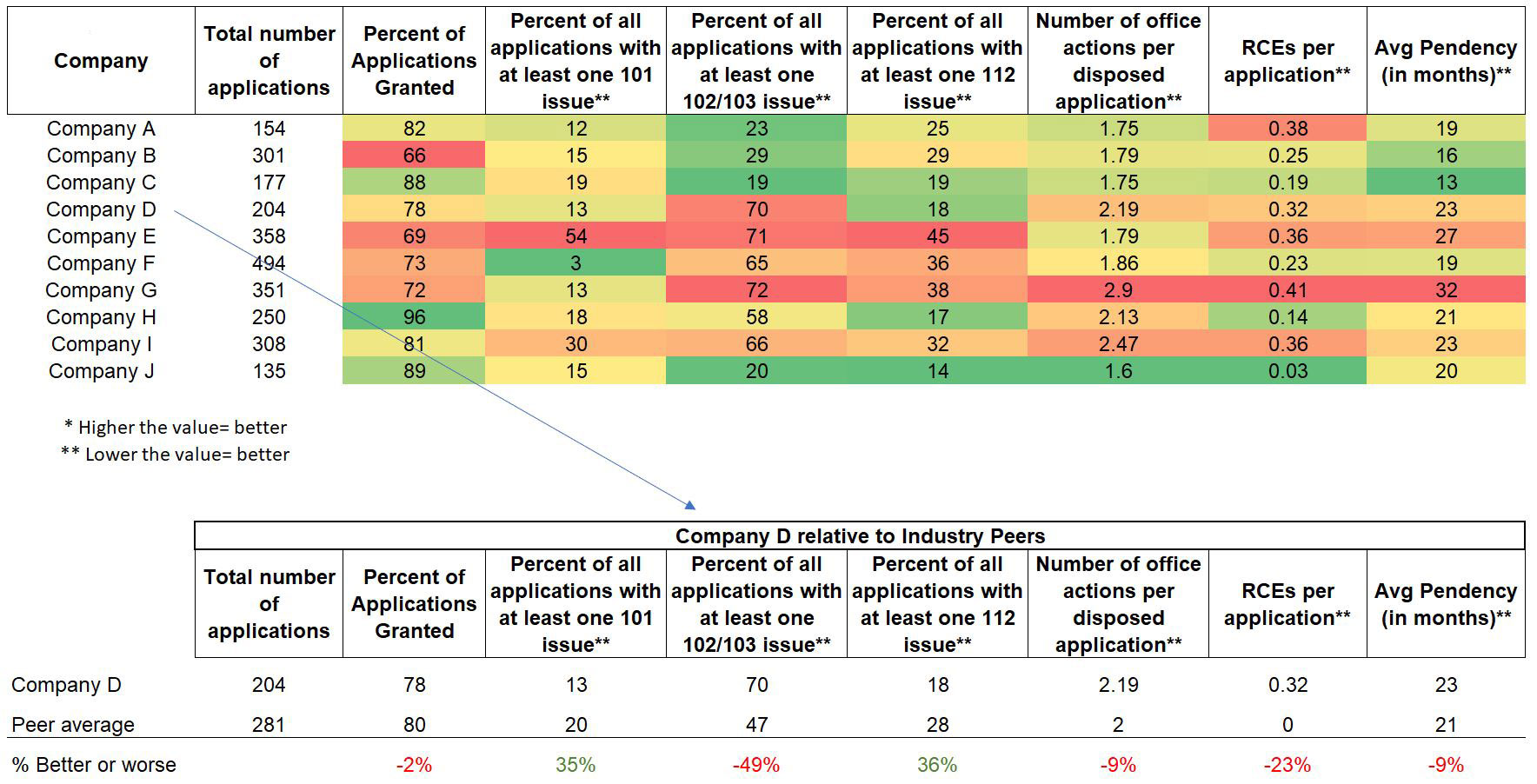Rowan Analytics Insights
Patent Prosecution Analytics Benchmarking Report – October 2023
Examining 102 Rejections in Office Actions by Technology Center
In our last newsletter, we investigated 101 rejections and their frequency by Technology Center. This month we continue on that path and move to 102 rejections.
Section 102 of the Patent Act deals with when the invention is anticipated (or is “not novel”) by a disclosure that is available as prior art. According to the USPTO, “To reject a claim as anticipated by a reference, the disclosure must teach every element required by the claim under its broadest reasonable interpretation.”
To study this, we looked at approximately 15,000 patent applications filed mostly in 2019 and 2020 and analyzed the various rejections cited in Office actions that these applications received. For those applications that received an Office action including a rejection based on a 102 issue, and were ultimately resolved either through abandonment or allowance, we then further divided them by Technology Center and status.
The below graph shows the percentage of Office actions that included a 102 rejection against the total sample.
Unlike 101 rejections, there do not appear to be any strong patterns among the Technology Centers. This is not terribly surprising given that a 102 rejection is about anticipatory art, and therefore less related to subject matter than to the actual application.
Some level of 102 rejections can depend on the quality and thoroughness of the prosecuting counsel. It can also depend on the filing and prosecution tendencies of different operating companies that file assets. Some might concede to a 102 rejection and abandon the effort, others may work through an Office action to overcome the objection. And of course, as with all rejections, there are variations from one examiner to another.
Among the abandoned assets, Technology Center 2800 (Semiconductors, Electrical and Optical Systems and Components) had the highest percentage of filings that received a 102 rejection, coming in at 59%. This was closely followed by 2100 (Computer Architecture, Software and Information Security) at 57% and 3700 (Mechanical Engineering, Manufacturing and Products) at 53%.
The lowest rejection rates among the abandoned assets were experienced by 2400 (Computer Networks, Multiplex, Cable and Cryptography/Security) at 32%, 2600 (Communications) at 36% and 1600 (Biotechnology and Organic fields) at 38%.
In an analysis of allowed assets, we found that Technology Center 3700 (Mechanical Engineering, Manufacturing and Products) had the highest 102 rejection rate at 45%. It was followed by 2800 (Semiconductors, Electrical and Optical Systems and Components) at 42%, and 3600 (Transportation, Electronic Commerce, Construction, Agriculture, Licensing and Review) at 41%.
The lowest rejection rates for allowed assets were experienced by 1600 (Biotechnology and Organic fields) and 2400 (Computer Networks, Multiplex, Cable and Cryptography/Security), both at 28%, followed closely by 2600 (Communications) at 29%.
Request Custom Analytics
If you would like to receive data on applications filed by your firm or your company like the below, to help you understand the power of analytical data to help you, please contact us and we will be happy to analyze your applications as a courtesy.
Book a No-Obligation Discovery Call
Rowan Patents is the only platform designed specifically for the drafting and prosecution of patent applications. We’d be happy to answer any questions and provide more resources or information—with no obligation.




